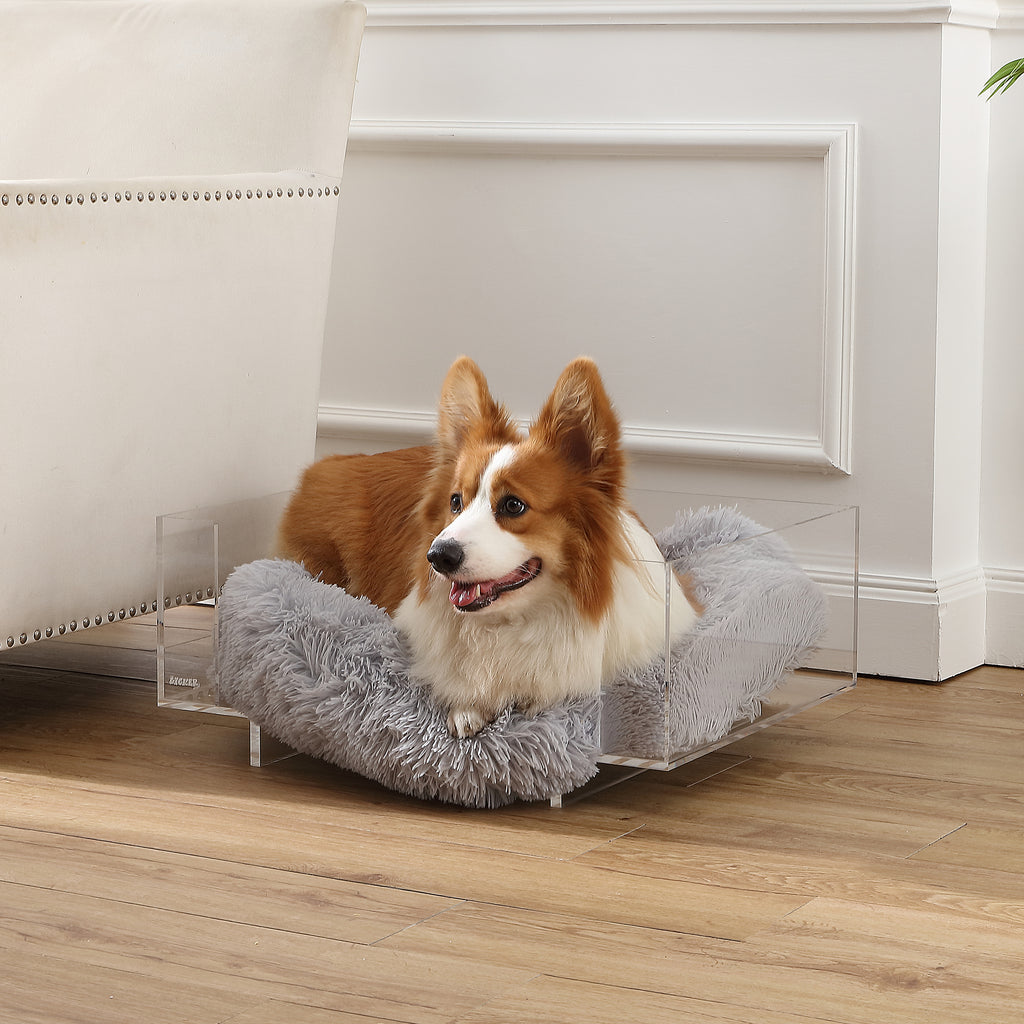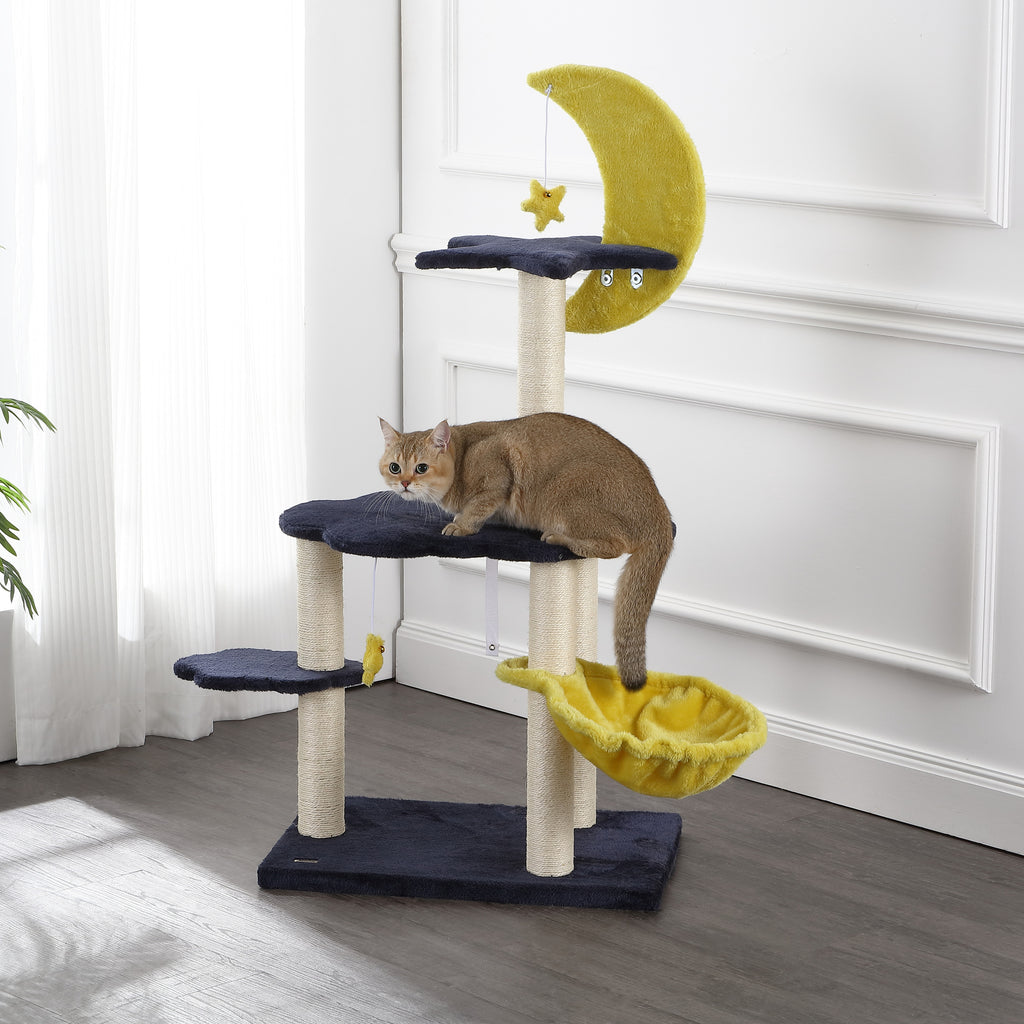Owning multiple cats can be a delight, but it comes with challenges. One of the most frequent questions among multi-cat owners is: Can cats share a litter box? While it might seem convenient, sharing a box can sometimes lead to stress, territorial disputes, and even health problems.
Cats view their litter box as a personal space—a safe zone where they can eliminate without worry. When multiple cats are introduced into the same box, it can trigger anxiety or competition, especially if there’s a dominance hierarchy in your household. By understanding feline behavior and creating a proper multi-cat litter box system, you can reduce conflicts and encourage healthy habits.
In this guide, we’ll explore the pros and cons of litter box sharing, best practices for multi-cat litter box setups, litter selection, cleaning strategies, behavioral insights, and troubleshooting tips to help your cats thrive in harmony.
Understanding Cat Behavior
Cats are territorial animals, and this trait strongly influences their litter box habits. Understanding these instincts can help prevent problems before they arise.
Territorial Instincts
-
Cats use scent-marking to communicate ownership and boundaries. Their litter box is one of these territories.
-
When a dominant cat intimidates another, it may avoid the shared box entirely, leading to accidents elsewhere.
-
Territorial disputes can also cause behavioral changes, such as increased vocalization, hiding, or aggression.
Additional Insight: Some cats are naturally more submissive and may defer to dominant cats. Understanding your cats’ personalities is key to predicting how they will interact with a shared litter box.
Hygiene Preferences
-
Cats are naturally clean and prefer fresh litter. A dirty or overcrowded box can deter use.
-
Overlapping waste can trigger avoidance behavior, increasing the risk of urinary or digestive issues.
-
Cats may even refuse to use boxes located near food or water, highlighting their preference for hygiene separation.
Additional Insight: Observing each cat’s litter habits—frequency, depth of digging, and timing—can help you anticipate problems in multi-cat environments.
Stress and Anxiety
-
Stress is a major factor in inappropriate elimination. A shared box can be a source of tension for some cats.
-
Signs of stress include over-grooming, reduced appetite, hiding, or excessive vocalization.
-
Multi-cat households with poor litter box arrangements often see higher incidences of behavioral problems.
Additional Insight: Providing each cat with a dedicated space, as well as access to shared areas when appropriate, can help mitigate anxiety.
Pros and Cons of Sharing a Litter Box
Understanding the benefits and risks of sharing a litter box helps owners make informed decisions.
Pros
-
Space-Saving: Reduces the number of boxes, which is helpful in apartments or smaller homes.
-
Easier Maintenance: Fewer boxes to clean if cats tolerate sharing, especially when using high-quality litter.
-
Social Bonding: Closely bonded cats, such as siblings, may share without stress, enhancing social bonds.
Additional Insight: Some owners find that sharing works best when boxes are extra large and located in quiet, private areas.
Cons
-
Stress and Competition: Dominant cats may intimidate submissive ones, leading to avoidance or territorial marking.
-
Hygiene Issues: Shared boxes accumulate waste faster, which can create odor and encourage avoidance.
-
Health Risks: Urinary tract infections, constipation, or gastrointestinal issues can worsen if cats avoid the box due to stress.
Expert Recommendation: Follow the “one litter box per cat plus one extra” guideline. This simple rule minimizes conflict, promotes hygiene, and ensures each cat has access to a safe elimination space.
Choosing the Right Litter Box
Selecting the right type of cat litter box is crucial in multi-cat households.
Box Types
-
Covered vs. Uncovered: Some cats prefer privacy, while others dislike enclosed spaces. Covered boxes can trap odors but may discourage timid cats from using them.
-
Self-Cleaning Boxes: Convenient, but not all cats accept automated movement or noise.
-
Traditional Trays: Simple, accessible, and easy to clean, making them ideal for households with multiple cats.
For multi-cat homes, a combination of box types may work best. For example, providing one large covered box and one uncovered box allows cats to choose according to their comfort level. This flexibility can reduce stress and encourage regular use.
Size Matters
-
Larger boxes allow multiple cats to enter comfortably, reducing territorial stress.
-
Ensure the box is at least 1.5 times the length of your largest cat.
Extra-large boxes or litter pans with low entry points can help older cats, kittens, or cats with mobility issues access the box comfortably, further promoting hygiene and consistent use.
Placement
-
Spread boxes throughout the home to prevent conflicts.
-
Avoid noisy or high-traffic areas, as cats may feel unsafe.
-
Keep boxes away from food and water to encourage use.
Consider placing boxes on multiple floors if you have a multi-level home. Cats often prefer to eliminate in quieter, less trafficked areas, so providing options increases compliance and reduces stress.
Choosing the Right Litter
Litter choice plays a critical role in multi-cat litter box success.
-
Clumping Clay Litter: Easy to scoop, excellent for odor control.
-
Unscented Litter: Prevents aversion caused by strong fragrances.
-
Natural/Biodegradable Litter: Gentle on paws and environmentally friendly.
-
Silica Gel Litter: Long-lasting odor control, though some cats may dislike texture.
Observe your cats’ litter preferences. Some cats refuse certain textures or scents. Using multiple litter types in different boxes can satisfy individual preferences and encourage consistent use.
Cleaning and Maintenance
Maintaining hygiene is the cornerstone of successful multi-cat litter box management.
-
Scoop waste at least once daily.
-
Wash boxes weekly with mild soap and warm water.
-
Replace litter completely every 2–3 weeks.
-
Use litter liners or mats to minimize tracking.
Consider keeping a cleaning log. Tracking box maintenance ensures that boxes are consistently clean, reduces odors, and minimizes stress, particularly in homes with multiple cats.
Addressing Common Litter Box Problems
Even with proper setup, problems may arise.
Avoidance
-
Causes: Dirty boxes, territorial disputes, or health issues.
-
Solutions: Add more boxes, place them in quiet areas, and maintain cleanliness.
Additional Paragraph: If avoidance persists, consult a veterinarian to rule out medical conditions such as urinary tract infections or gastrointestinal issues, which are common in multi-cat households.
Aggression
-
Causes: Dominant cats blocking access, competition for space.
-
Solutions: Separate boxes, use pheromone sprays, and gradually reintroduce sharing.
Additional Paragraph: Positive reinforcement, such as treats for using the box correctly, can reduce tension and encourage submissive cats to feel safe during litter box use.
Odor Control
-
Use clumping litter and frequent cleaning.
-
Consider baking soda or litter deodorizers.
Ventilation is also important. Proper airflow in litter areas helps reduce odors and creates a more comfortable environment for all cats.
Behavioral Strategies for Multi-Cat Households
-
Observe and Intervene: Watch interactions around litter boxes.
-
Provide Vertical Space: Cat trees, shelves, and hiding spots reduce territorial disputes.
-
Separate Feeding Areas: Avoid competition and reduce stress.
-
Use Pheromone Products: Feliway diffusers help calm stressed cats.
-
Routine: Keep feeding, play, and cleaning schedules consistent.
Encourage enrichment through playtime and environmental stimulation. Engaging cats mentally and physically reduces stress, decreases competition, and improves litter box habits.
When Litter Box Sharing Works
Some cats, particularly bonded siblings, may comfortably share.
-
Both cats use the box without stress.
-
No accidents occur outside the box.
-
Calm interactions at the box.
Even when sharing works, having at least one extra box ensures that if one box becomes dirty or a cat feels stressed, there’s always a safe, clean alternative.
Advanced Tips for Large Multi-Cat Households
-
Multiple Floors: Place boxes on each level for convenience.
-
Different Litter Types: Accommodate individual preferences.
-
Gradual Introductions: New cats should have a separate box until comfortable.
-
Monitoring Health: Stress can affect immunity; observe appetite, litter habits, and behavior.
Consider color-coding boxes or placing visual markers to help cats differentiate their spaces. This can reduce confusion and stress in homes with several cats.
Environmental Enrichment
-
Provide interactive toys and scratching posts.
-
Offer window perches for visual stimulation.
-
Schedule daily playtime to expend energy and reduce territorial disputes.
Environmental enrichment not only reduces stress but also encourages regular movement and healthy habits, which indirectly supports proper litter box use.
Health Considerations
Sharing litter boxes can impact health if hygiene is poor:
-
Urinary Tract Infections (UTIs): Stress and avoidance increase risks.
-
Feline Lower Urinary Tract Disease (FLUTD): Linked to dirty or shared boxes.
-
Parasites: Poor sanitation can spread intestinal parasites.
Additional Paragraph: Monitoring cats for subtle changes in behavior, urine frequency, or stool consistency is essential for early detection of health problems. Prompt veterinary attention can prevent minor issues from becoming serious.
Conclusion
Can cats share a litter box? While possible for some bonded cats, it’s generally safer to provide one box per cat plus one extra. Understanding cat behavior, maintaining cat hygiene, and providing multiple options ensures a stress-free, healthy environment.
Key Takeaways:
-
One litter box per cat plus one extra is safest.
-
Clean boxes frequently and use high-quality litter.
-
Observe behavior and adjust box placement as needed.
-
Sharing works best for bonded cats, but extra boxes are recommended.
By following these expert tips, your multi-cat household can remain harmonious, clean, and healthy, with minimal stress and maximum comfort.
FAQs
Q1: Can kittens share a litter box?
Yes, kittens often share early on, but separate boxes are recommended as they grow.
Q2: How many litter boxes for three cats?
Four boxes – one per cat plus one extra.
Q3: What litter is best for sharing?
Clumping, unscented, or biodegradable litters are ideal.
Q4: Can litter box sharing cause health issues?
Yes, stress and poor hygiene can lead to UTIs, FLUTD, and inappropriate elimination.
Q5: How do I encourage a stressed cat to use a shared box?
Provide multiple boxes, clean frequently, place boxes in quiet locations, and consider pheromone diffusers.






